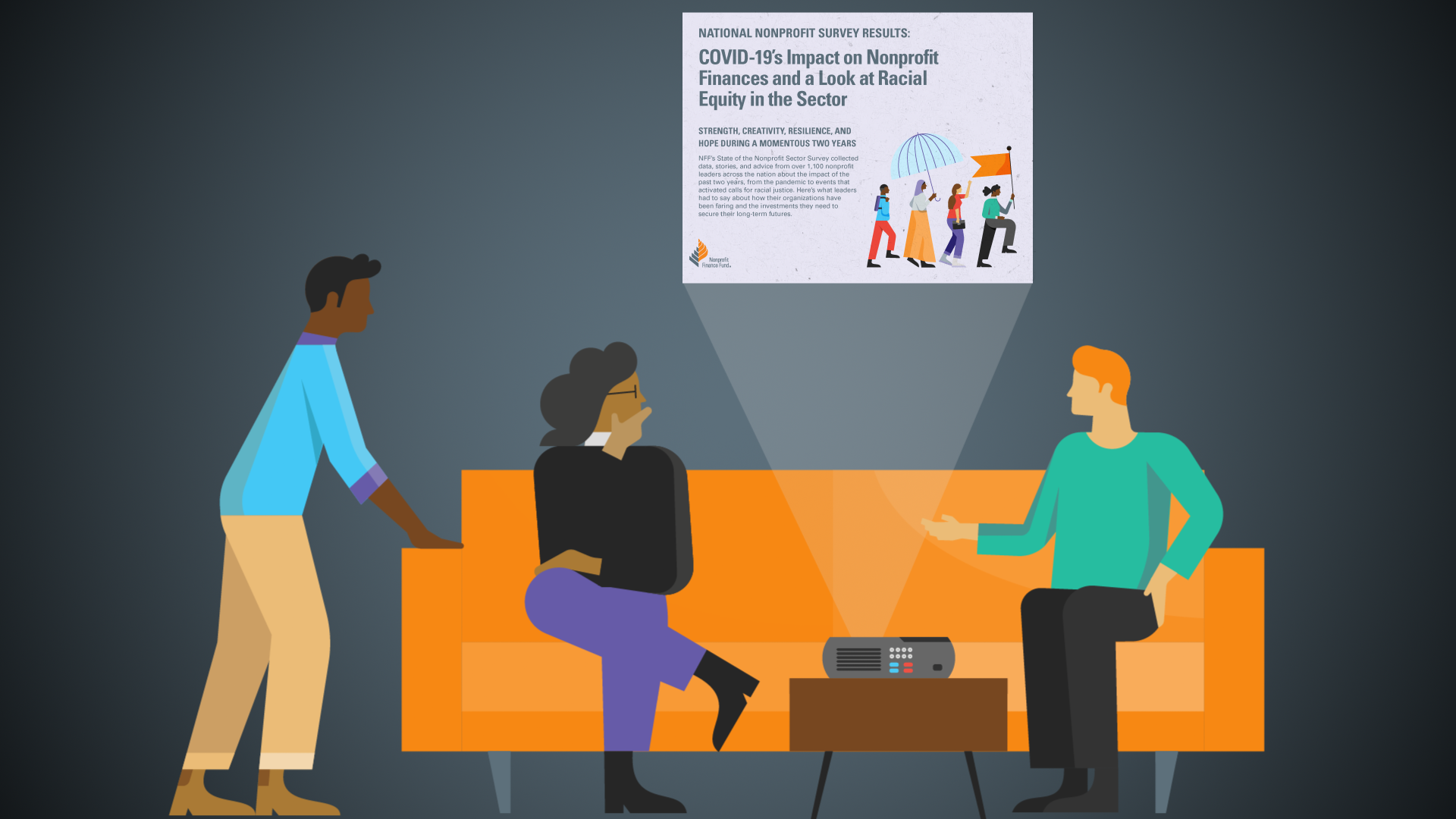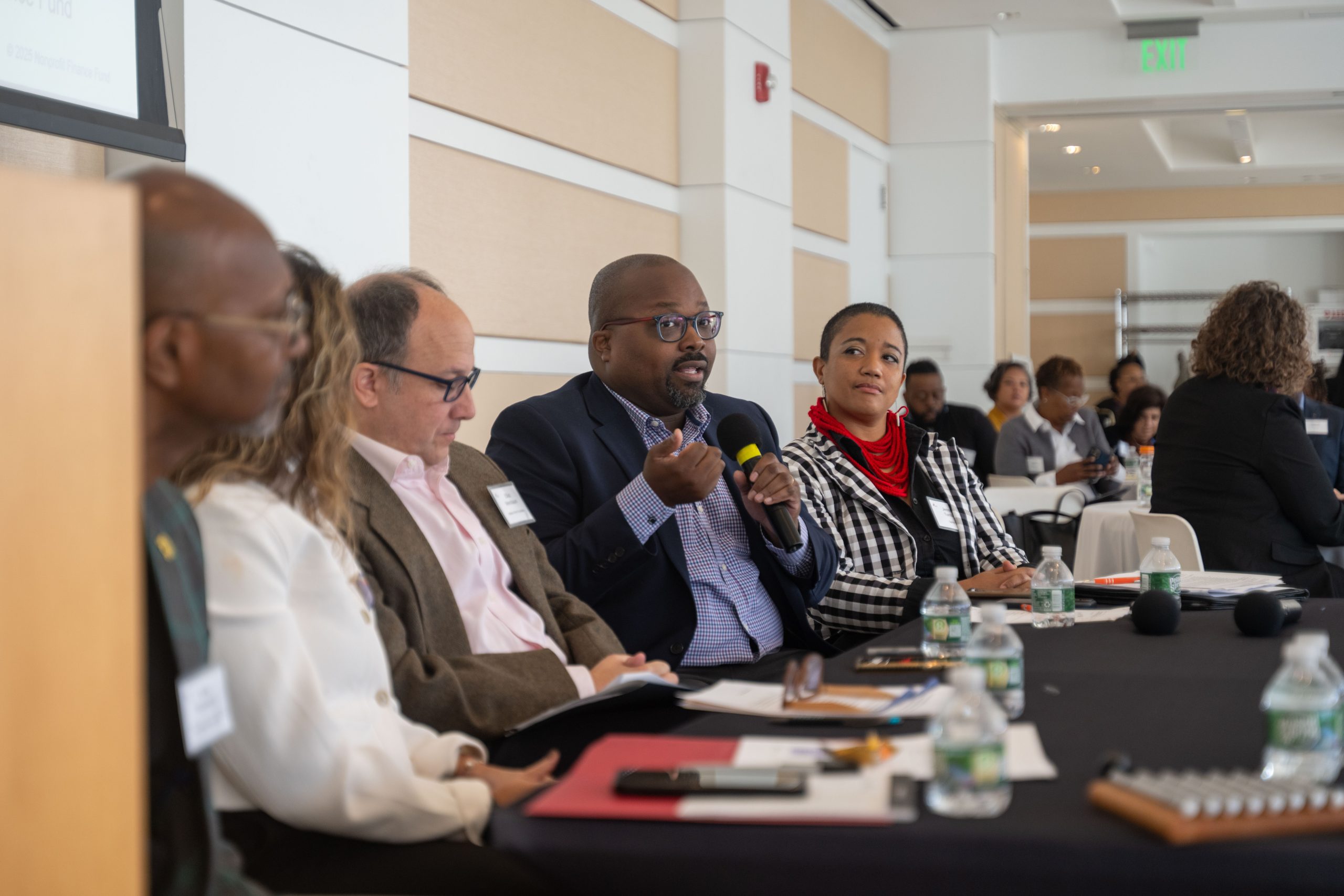The 2022 State of the Nonprofit Sector Survey revealed that nonprofits are adapting to new realities as they serve communities across the United States. It found that while many nonprofits are in a strong financial position, fears remain over challenges like achieving long-term financial sustainability, covering the full costs of their operations, and raising unrestricted funding.
And while BIPOC-led (Black, Indigenous, and people of color) nonprofits were at the forefront of advancing racial equity and representing community voices, long-standing inequities persist in a nonprofit funding system that favors white-led organizations.
Join us as we dive into the survey results with the help of survey respondents. We start with a look at nonprofit financial health overall. Then we turn to racial inequities that nonprofits continue to experience. Finally, we share what funders can do to best support nonprofits, informed by principles of Trust-Based Philanthropy and recommendations from nonprofit leaders themselves.
What We Learned About Nonprofit Financial Health Through the 2022 State of the Nonprofit Sector Survey
What We Learned About Racial Inequities Through the 2022 State of the Nonprofit Sector Survey
Transcript: What We Learned About Nonprofit Financial Health Through the 2022 State of the Nonprofit Sector Survey
So, there we were, combing through the responses to the 2022 State of the Nonprofit Sector Survey, when we found one that captured pretty much all our findings about the last two years. This one, right here. Let’s take a look.
“We survived. We also learned many lessons from the pandemic – especially how to pivot to an online program. We provided our students a chance to process and discuss the murder of George Floyd through Zoom meetings and online community virtual forums…We also expanded our reach in our after-school program and began additional programs. We were resilient. We also received PPP funds which helped us survive as an organization, but we are not sure how we will fill the gap we now have moving forward without it.”
Amid two years of stress, upheaval and facing down the unknown, this says a lot. And we were pleasantly surprised to see some positive trends related to it.
As demand for services ballooned during the COVID-19 pandemic, the majority of respondents actually saw their funding rise as they adapted to meet new challenges.
Nonprofits saw foundations become more flexible with their grant dollars, often using unrestricted funding to support communities’ needs.
And in a time of great need, many organizations were able to use PPP loans to keep serving communities.
That money helped nonprofits meet increased demand and adapt programs to serve clients throughout the pandemic, creating new – and sometimes lasting – ways of working.
Meanwhile, uprisings for racial justice following George Floyd’s murder informed the work and experience of nonprofits over the past two years. And the effects of politically and racially motivated violence reverberated throughout the sector.
We’ll explore these impacts more in the next video.
Challenges remain. Nonprofits still struggle to employ enough staff, offer competitive pay, and prevent burnout. Most remain worried about their long-term financial sustainability.
Funders can take action to address nonprofits’ fears and build a more resilient, equitable social sector, making positive, lasting changes in our communities. We’ll explore the specifics in a later video. But first, there’s something missing. When we broke down survey data by race, the picture shifted significantly. More on that in our next video.
Transcript: What We Learned About Racial Inequities Through the 2022 State of the Nonprofit Sector Survey
So, in our last video, we looked at one quote that summarized our top-level survey findings. But let’s add some nuance, because it turns out racial inequities persist in nonprofit funding in some pretty insidious ways. Let’s take a look through the eyes of one survey respondent.
“The pandemic has taught us that solid systems, karma, cross training of staff, and staying current on technology were even more vital than we had thought upon implementation of those initiatives. Mostly, we are proud that our team has stepped up supporting neighbors, friends, and family. Proud that our team pivoted quickly. Proud that they remain mission focused. And proud of the work we have accomplished despite everything happening around the world.”
We saw in the last video that nonprofits continuously showed up for their communities, adapting programs to meet rising demand. Deep connections to communities give nonprofit leaders the greatest insight into how to reach their communities’ aspirations. We saw these connections were especially strong among BIPOC-led organizations, which were much more likely than white-led organizations to have CEOs with lived experience representative of the communities they serve.
BIPOC-led nonprofits were also particularly active addressing racial disparities in their communities and have been for longer than white-led organizations.
However. Remember how both demand for services and nonprofit funding rose during the pandemic? These increases weren’t equally felt. Service demand rose significantly more for BIPOC-led nonprofits than those with a white CEO – and increases are expected to continue.
And though funding increased, Black-led organizations did not receive as much additional funding as other organizations.
BIPOC-led organizations also saw less flexibility from foundation funders and greater funding restrictions than white-led nonprofits, continuing a longstanding discriminatory trend in nonprofit funding.
And about the uprisings for racial justice following George Floyd’s murder and ongoing politically and racially motivated violence?
Unfortunately, but not surprisingly, racially motivated violence affected BIPOC-led nonprofits more – and Black-led nonprofits specifically.
So, what about the future? Despite philanthropy’s stated commitments to racial equity and inclusion, funding inequities persist in favor of white-led organizations. And long-term sustainability remains a concern for all nonprofits and is greater for BIPOC-led organizations.
There are steps funders can take to address these issues and build a more resilient, equitable social sector, making positive, lasting changes in our communities. In the next video we’ll show how.
Transcript: What Funders Can Do To Address the Challenges Nonprofits Face
Over the last two videos we’ve looked at some of the key findings of the 2022 State of the Nonprofit Sector Survey, learning that nonprofits adapted to the realities of the COVID-19 pandemic and that funders adapted the ways they funded by providing more dollars and, importantly, more flexible funding.
We also found that there are many racial disparities in nonprofits’ experiences and their levels of funding. And we saw that organizations remain concerned about funding, staffing, and meeting demand going forward.
So what can funders do to reduce racial inequities in funding and support nonprofits into the future? Let’s start with Trust-Based Philanthropy.
You can practice Trust-Based Philanthropy both in actions you take today and in making longer-term, structural changes to how you fund.
- Give multi-year, unrestricted funding
- Do the homework on nonprofits to save them time in the vetting process
- Simplify and streamline paperwork
- Be transparent and responsive
- Solicit and act on feedback
- Offer support beyond the check
What else could Trust-Based Philanthropy look like? Here are some recommendations we heard from survey respondents. You can start with easier actions for your institution as you plan for bigger shifts. Here’s what you can do:
- Give flexible funding, such as unrestricted funds, including general operating support
- Understand and fund full costs
- Fund operations – like technology, training, infrastructure, and staff hires
- Fund organizations to have a surplus or rainy-day fund, and, at the least, don’t penalize nonprofits for having a surplus or reserves
- Fund at levels that let nonprofits pay living wages to all staff
- Be upfront with nonprofits about whether you can provide multi-year funding
- Provide funding upfront, or at the very least, on-time
Finally, change inequitable funding practices within your own institution.
- Seek out and fund organizations that are led by people with relevant direct experience and personal relationships in the communities you’re supporting.
- Pay particular attention to BIPOC-led, community-centered organizations that may have been excluded from traditional funding pathways.
- Support them with funding or advice, and introduce them to others in your network who might be able to support them.
- Make nonprofits and community leaders co-designers in grantmaking initiatives; involve them in decisions on what and who to fund.
- Have and apply an informed lens on race and equity.
- Stop practices that can exclude smaller and newer organizations
- Make funding applications easier.
- Don’t disqualify organizations based on minor errors or omissions
- Remove costly requirements like audited financial statements.
The COVID-19 pandemic instigated and accelerated bold ways of funding. In the past two years we’ve seen a lot of innovative ways to fund organizations. Let’s keep it up!
These changes require rethinking the way many of us fund nonprofits. They push us to be more equitable and to transfer power – and money – to those closest to the solutions. And, we believe, they’ll lead us to a more vibrant and equitable future.
Visit nff.org to get started and to explore the full results from the 2022 State of the Nonprofit Sector Survey.


